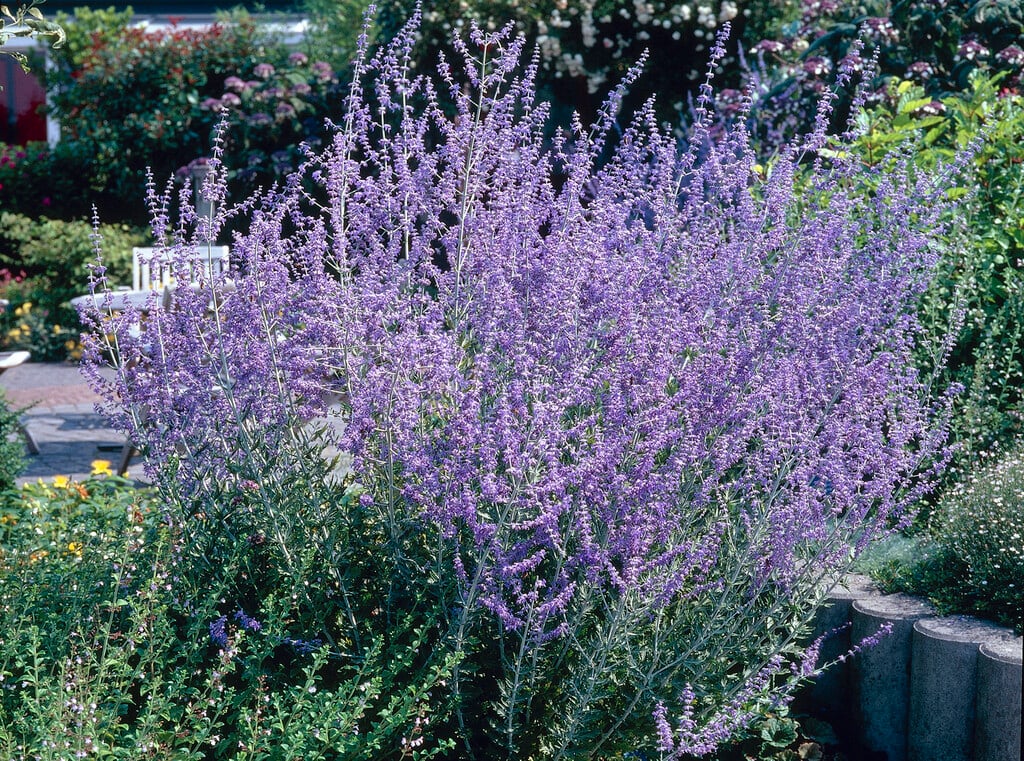Perovskia 'Blue Spire'

perovskia 'Blue Spire'
A small, upright deciduous sub-shrub to 1.2m, with white stems bearing deeply-divided, aromatic grey-green leaves. Small, violet-blue flowers in large plumy panicles appear in late summer and autumn
Other common names
sage 'Blue Spire'Synonyms
Perovskia 'Blue Spire'Perovskia hybrida 'Blue Spire'
see morePerovskia atriplicifolia 'Blue Spire'
Size
Ultimate height
1–1.5 metresTime to ultimate height
2–5 yearsUltimate spread
0.5–1 metresGrowing conditions
Moisture
Well–drainedpH
Acid, Alkaline, NeutralColour & scent
| Stem | Flower | Foliage | Fruit | |
| Spring | Green White | Green Grey Silver | ||
|---|---|---|---|---|
| Summer | Green White | Purple | Green Grey Silver | |
| Autumn | Green White | Purple | Green Grey Silver | |
| Winter |
Position
- Full sun
Aspect
East–facing or South–facing or West–facing
Exposure
Exposed or ShelteredDrought resistance
Yes Hardiness
H5Botanical details
- Family
- Lamiaceae
- Native to GB / Ireland
- No
- Foliage
- Deciduous
- Habit
- Bushy
- Genus
Salvia can be annuals, biennials, herbaceous or evergreen perennials, or shrubs. They have paired, simple or pinnately lobed, often aromatic leaves and 2-lipped flowers in whorls, forming simple or branched spikes or racemes
- Name status
Accepted
- Horticultural Group
- This genus has changed from Perovskia to Salvia
How to grow
Cultivation
Grows well in poor but well-drained soils in full sun
Propagation
Propagate by softwood cuttings in late spring or semi-ripe cuttings in summer
Suggested planting locations and garden types
- Gravel garden
- City and courtyard gardens
- Cottage and informal garden
- Mediterranean climate plants
- Wildlife gardens
- Flower borders and beds
Pruning
Pruning group 6, cut back hard in early spring
Pests
Generally pest-free
Diseases
May be susceptible to honey fungus (rarely), powdery mildews, verticillium wilt and foot and root rots
Get involved
The Royal Horticultural Society is the UK’s leading gardening charity. We aim to enrich everyone’s life through plants, and make the UK a greener and more beautiful place.
